Does the Bride Usually Pay for Hair and Makeup? A Friendly Guide to Wedding Traditions
When planning a wedding, one question that often comes up is who should pay for the bridesmaids’ hair and makeup. It’s common to wonder whether this cost should fall on the bride or the bridesmaids. The traditional approach is for the bride to cover the costs for her bridal party’s glam session. This allows the bride more control over the overall look and can be a nice way to treat her friends.
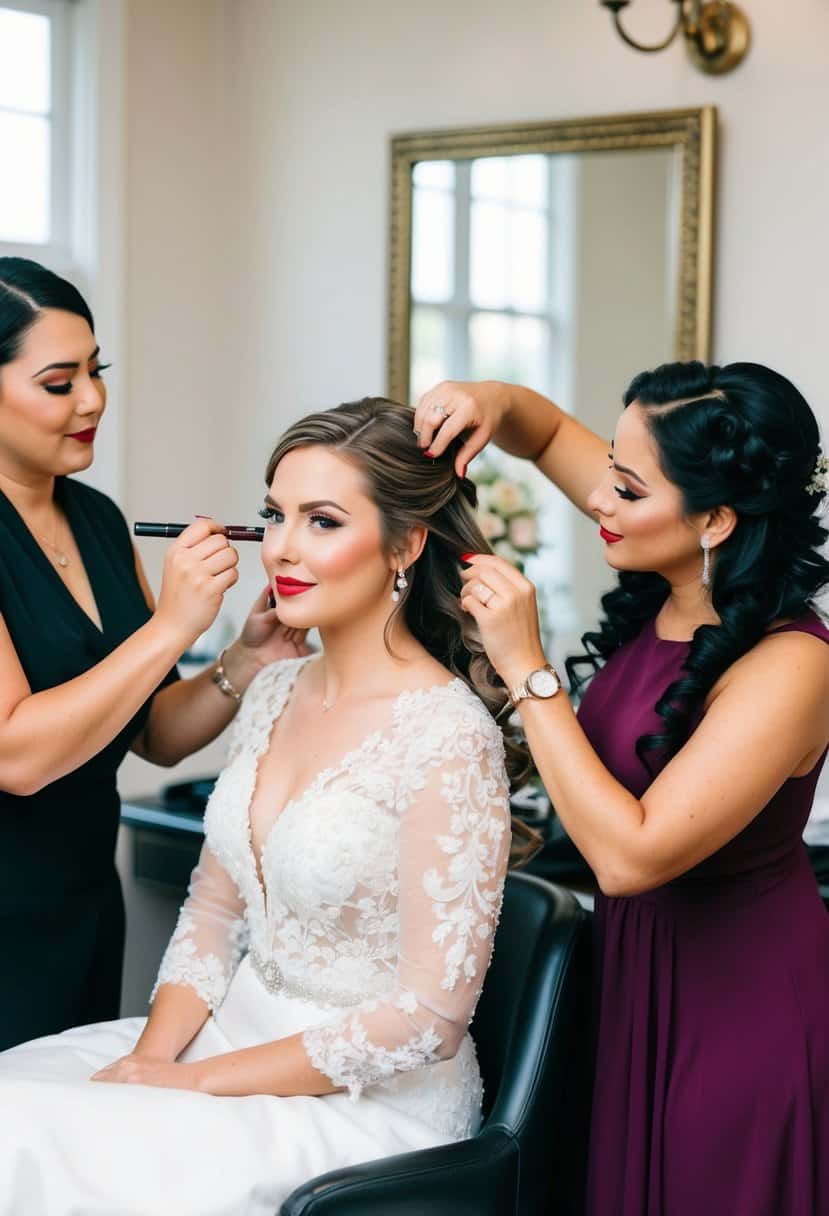
However, not every wedding follows this tradition. Sometimes brides and bridesmaids decide to share the expenses. For instance, the bride might pay for makeup while the bridesmaids handle their own hair expenses. There isn’t a strict rule for this, so it often depends on the preferences and budgets of those involved.
Understanding different practices can help you make the right choice for your big day. Whether you’re sticking to tradition or creating your own approach, it’s all about what works best for your group. For more detailed insights on wedding expenses, you can check out useful resources like those on The Knot and Zola.
Understanding Wedding Hair and Makeup Traditions
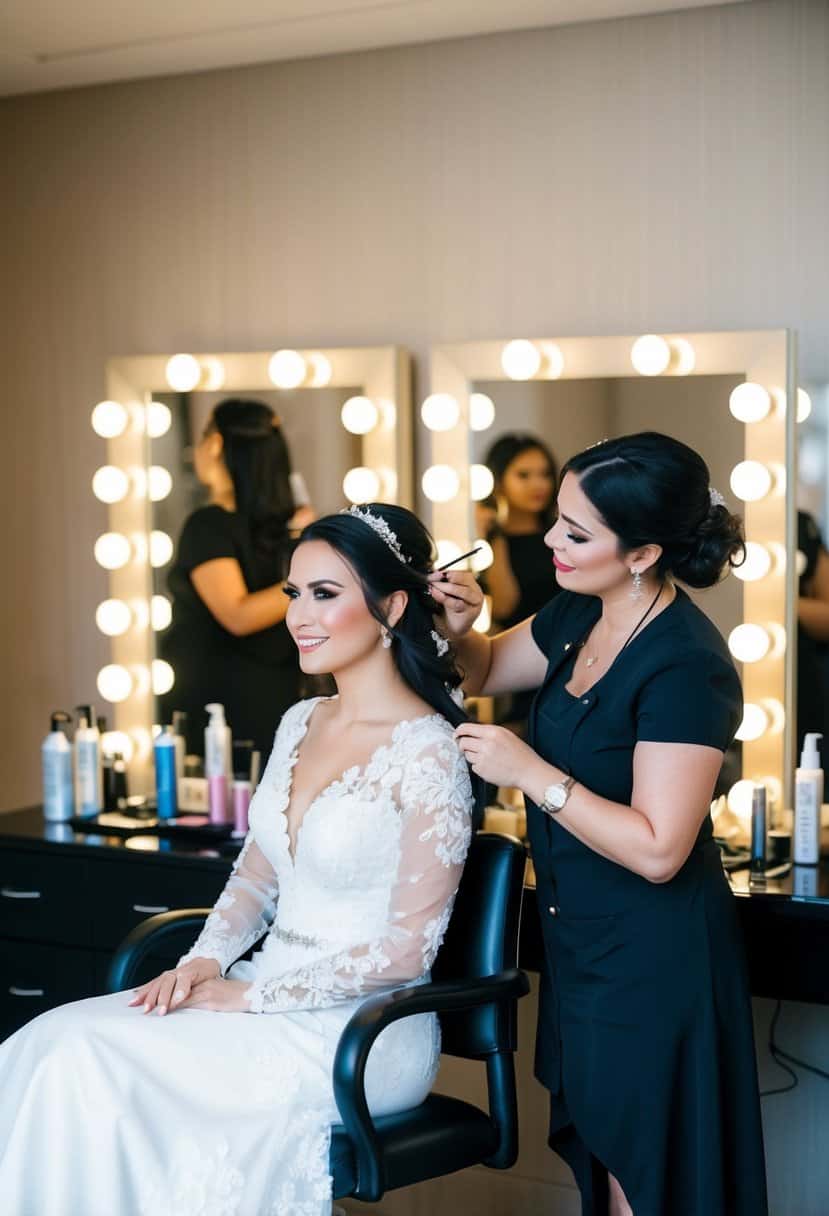
Deciding who covers the cost of hair and makeup for the bridal party can be tricky. Traditions play a big role, but personal preferences are also important.
Wedding Etiquette and Financial Commitments
At weddings, traditions often guide decisions, particularly around expenses. Typically, the bride’s family handles many costs, but this custom has evolved. Nowadays, many couples share expenses or make decisions based on individual circumstances.
When it comes to hair and makeup, there is flexibility. You might follow the traditional route where the bride’s family pays, or you might split costs among the bridal party, ensuring everyone is comfortable with the arrangement. Agreeing early on helps avoid misunderstandings.
Consider discussing these responsibilities openly. Clear communication can reduce stress and set the right expectations among your friends and family.
Who Pays for Bridesmaid Hair and Makeup?
Traditionally, the bride takes care of hair and makeup expenses for the bridesmaids. This allows for a unified look and style on the wedding day. Some brides like to have control over the overall appearance, which might mean covering these costs themselves.
On the other hand, some bridesmaids might prefer paying for their own services, allowing them the freedom to choose their look. It’s also an option for the bride to pay for something specific, like makeup, while the bridesmaids cover their hair styling.
Each wedding is unique, and the choice ultimately depends on personal preferences and financial capabilities. If you’re unsure, perhaps look at examples such as from The Knot, to see how others manage these arrangements. Make sure everyone is happy with the plan to ensure a smooth and joyful wedding experience.
Bridal Hair and Makeup Costs
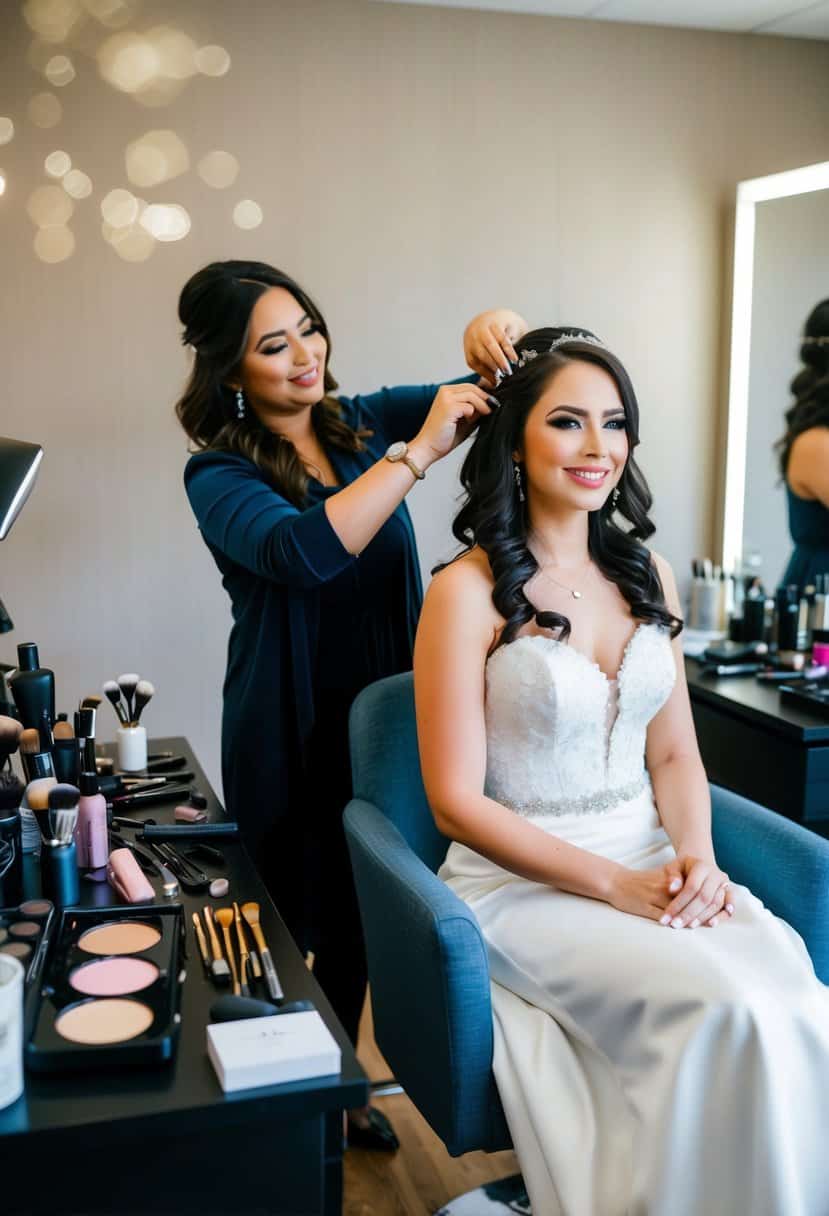
When planning for your big day, consider several factors that can impact the costs of bridal hair and makeup. These include pre-wedding events and current beauty trends like airbrush makeup.
Bridal Shower and Bachelorette Party Considerations
Planning a bridal shower or bachelorette party often means extra expenses for hair and makeup. If you want professional styling for these events, the costs can add up quickly.
It’s common to spend between $100 and $350 for hair and around $140 for makeup during such occasions, though prices can vary.
Sometimes, brides choose to foot the bill for their bridal party during these events, which can be a thoughtful gesture but also adds to the overall costs. Consider whether you want a consistent look for you and your friends. Economical options include group booking discounts or DIY options for certain parts.
Airbrush Makeup and Other Trends
Airbrush makeup is gaining popularity among brides. It provides a flawless finish that lasts longer, which is perfect for all-day events.
While this option can be pricier, typically ranging from $150 to $600, many find it worthwhile. If you prefer a more traditional look, standard makeup options are available and can be just as beautiful.
Keep an eye on current beauty trends as they can influence your budget. Stylish accessories such as jeweled hairpins or high-end beauty products might add additional costs. If you’re considering trying trending styles, discuss them with your stylist a few weeks before your wedding to ensure your vision aligns with your budget and the latest trends.
Planning and Budgeting
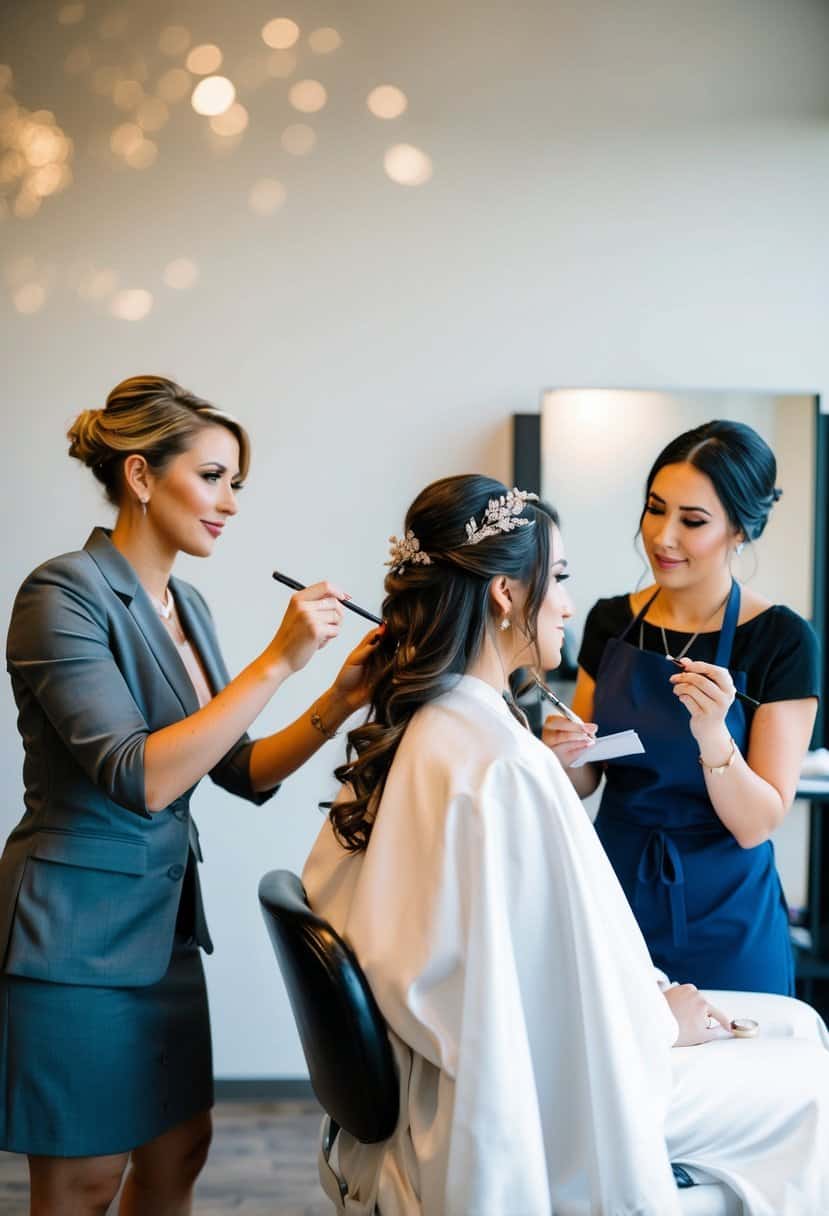
Planning your wedding involves careful budgeting to ensure a memorable day without breaking the bank. Beauty expenses like hair and makeup can add up, so it’s essential to know how to allocate funds wisely and seek advice to stay within your budget.
Allocating Funds for Beauty Expenses
When planning, it’s important to set aside a budget for beauty expenses early on. The cost of hair and makeup for brides and bridesmaids can vary.
Some brides choose to cover all costs to have more control over the final look, while others may ask bridesmaids to pay their share, allowing for a split. Discuss options with your bridal party to find a plan that suits everyone’s budget.
List out all beauty-related costs, including trials, day-of services, and any necessary touch-ups. Aligning these expenses with your overall wedding budget helps in managing funds effectively.
Keep an eye on any special offers, packages, or bundled services that salons may provide for brides and their parties.
Wedding Planner Insights
A wedding planner can provide valuable insights and help with beauty budget planning.
Planners often have connections with beauty professionals and can negotiate better deals or recommend those who fit your desired style and budget. Their experience can guide you in understanding industry standards for costs and assist in keeping everything on track.
Discuss your beauty plans with your wedding planner early. They can help schedule hair and makeup appointments, ensuring that your morning runs smoothly. Collaborating with a planner allows you to have a stress-free day, knowing that every aspect of your beauty routine is well-organized and on budget.
Bridesmaid Contributions

When planning a wedding, bridesmaids often contribute to a variety of expenses, including attire and floral arrangements. It’s important to communicate clearly about these costs to avoid misunderstandings.
Dresses, Bouquets, and Additional Expenses
Typically, you’ll be responsible for purchasing your own bridesmaid dress. This cost can vary based on the style and designer.
It’s a good idea to discuss the dress budget with the bride to find a comfortable price point. Some brides offer to pay for accessories or alterations, but this isn’t always the case.
Bridesmaid bouquets are another common expense. While some brides cover the cost, others might ask you to chip in.
Aside from dresses and bouquets, consider additional expenses like shoes, jewelry, and wedding day transportation. Understanding these costs in advance helps you plan your budget accordingly.
How to Address Bridesmaids’ Costs
Discussing money matters can be tricky, but clear communication is key to avoiding misunderstandings. If the bride is covering costs, there’s usually no issue. However, if expenses will be shared, it’s helpful to know how to navigate this conversation.
When asking you to cover costs like hair and makeup, the bride should be direct yet considerate. You might receive a friendly message outlining the expected contributions. This is also a good opportunity to clarify any concerns or ask if alternate arrangements can be made. Being upfront about your needs ensures a smooth planning process.
Linking to some relevant resources might provide additional insight, like exploring articles on bridesmaid expenses or understanding the dynamics of who pays for bridesmaid hair and makeup. This way, you have a better sense of what to expect.
Destination Weddings and Unique Circumstances
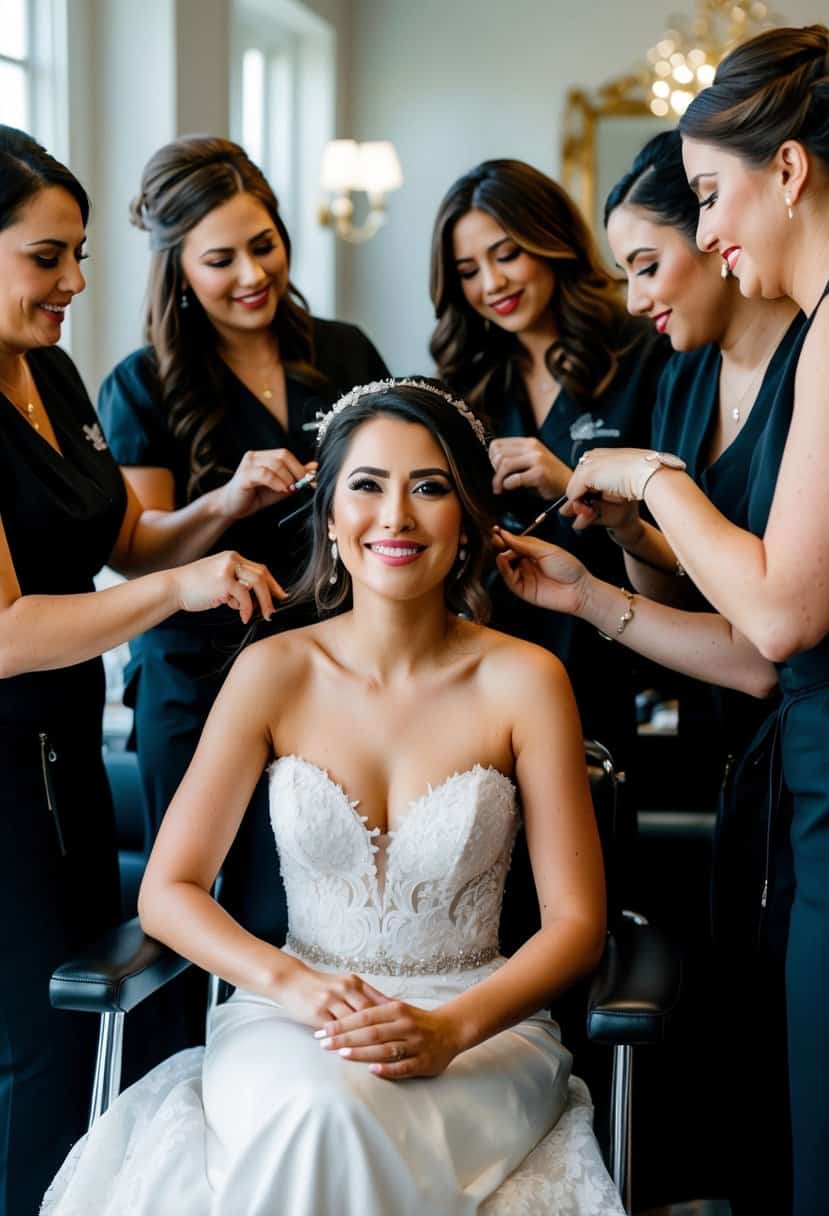
Planning a destination wedding brings unique financial aspects. You need to think about what costs you and your bridesmaids might cover. Balancing budgets is key so everyone has a great experience.
Adjusting the Financial Expectations
When you organize a destination wedding, you need to be clear about who pays for what. Typically, you cover costs like the venue and your own travel. Bridesmaids usually handle their own travel expenses, but you could help if your budget allows.
Discussing expectations early is helpful. Consider expenses such as hair and makeup. You might pay for these to ensure a consistent look in photos.
If you’re having wedding flowers at the destination, decide if it’s your expense or shared among the group. Communication and planning help make your destination wedding smooth and enjoyable for everyone.


